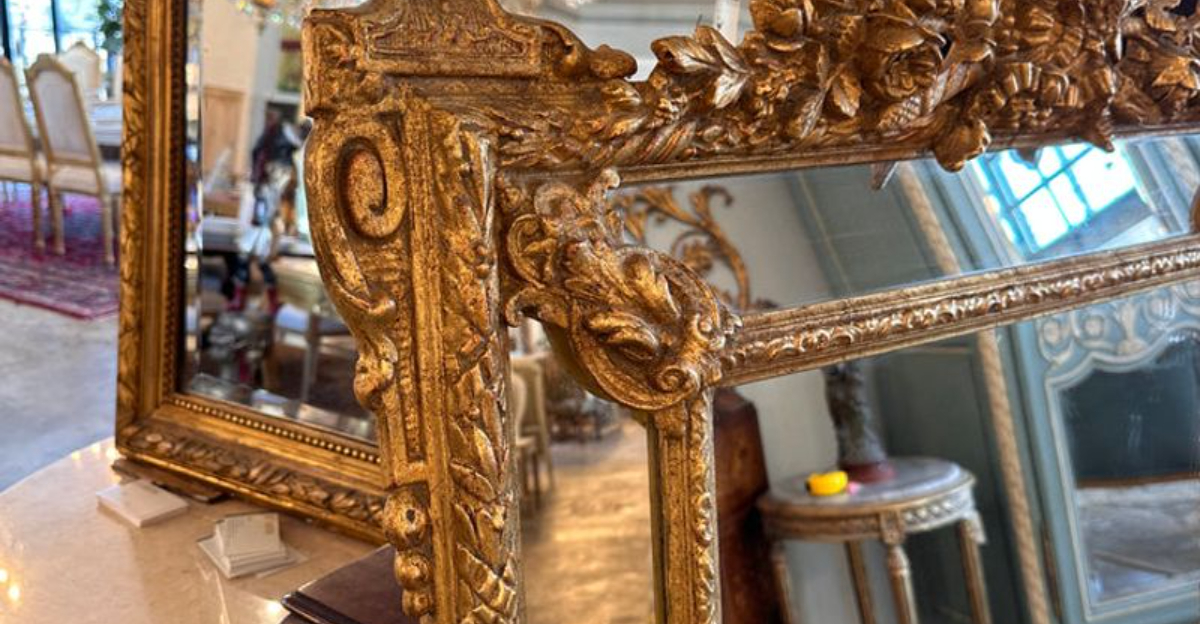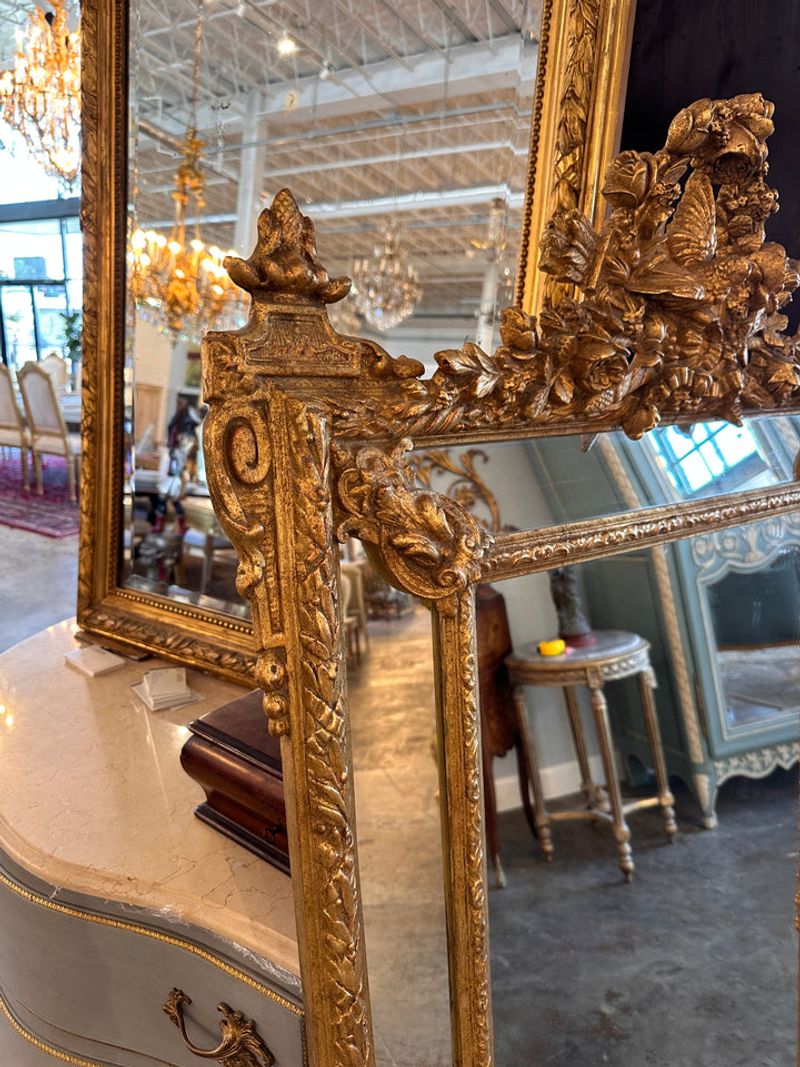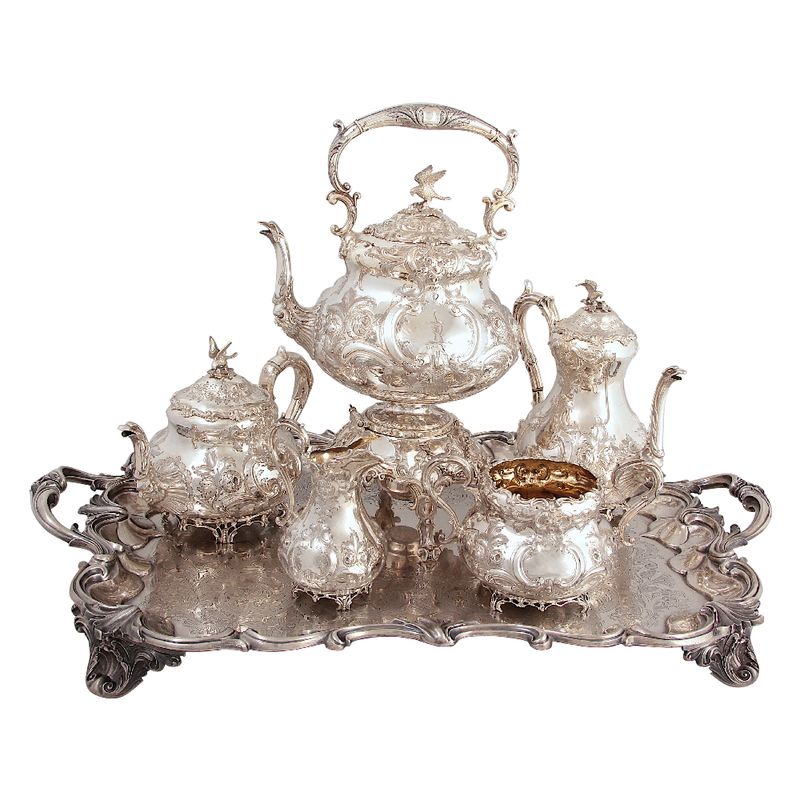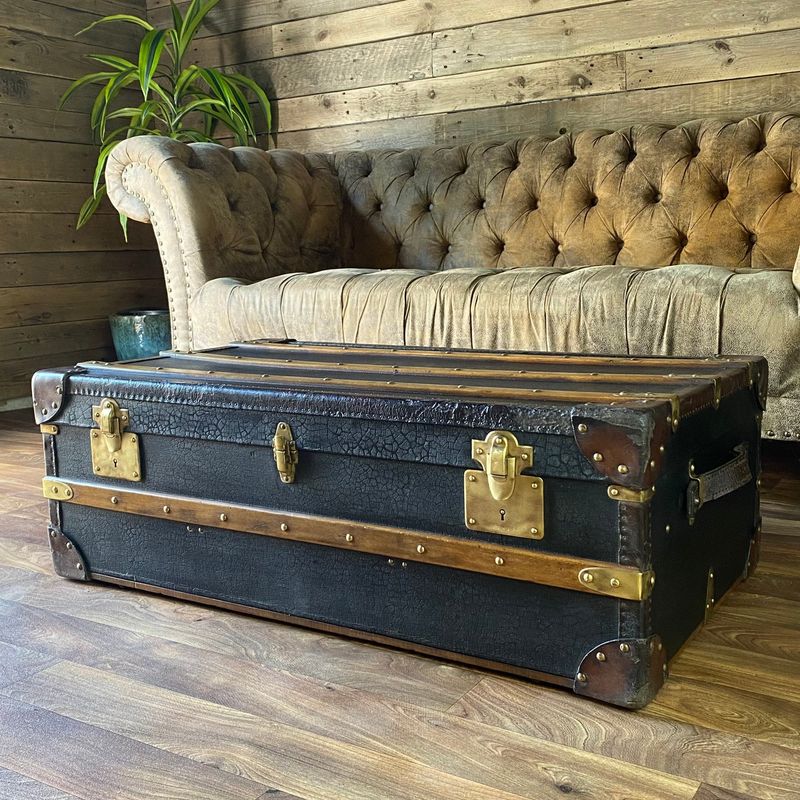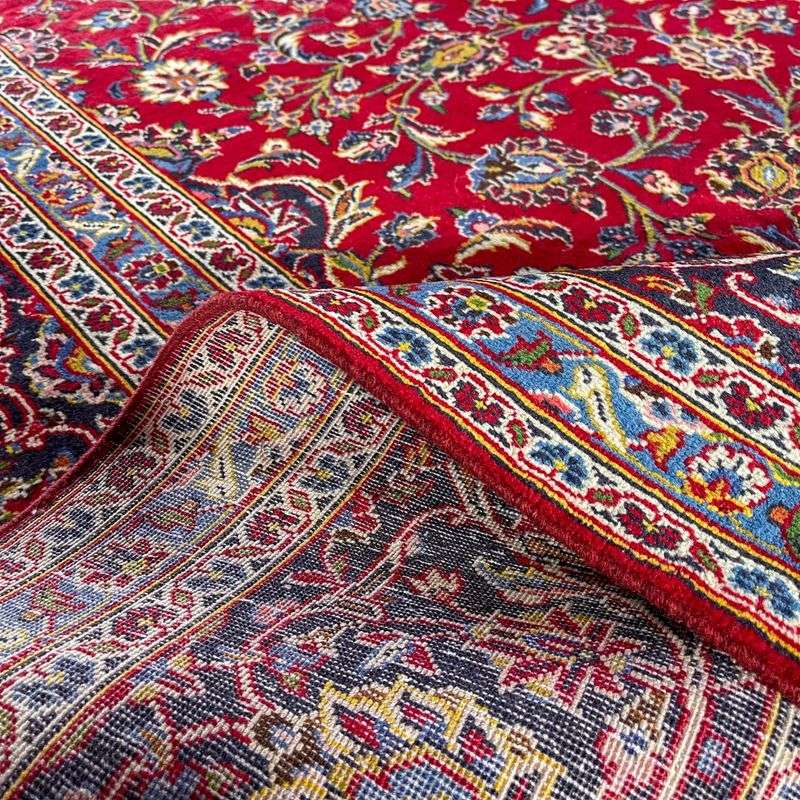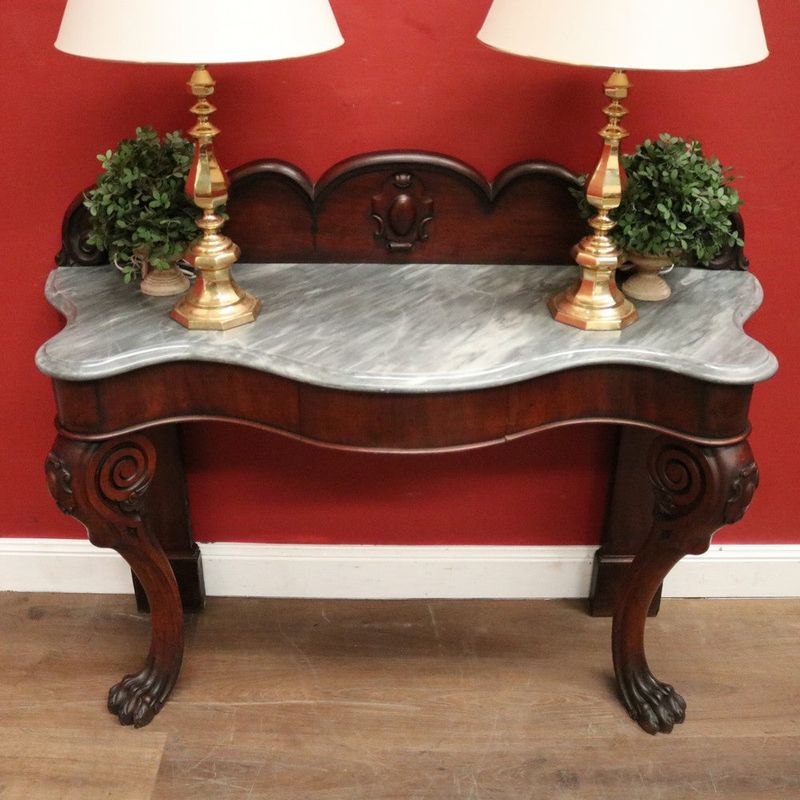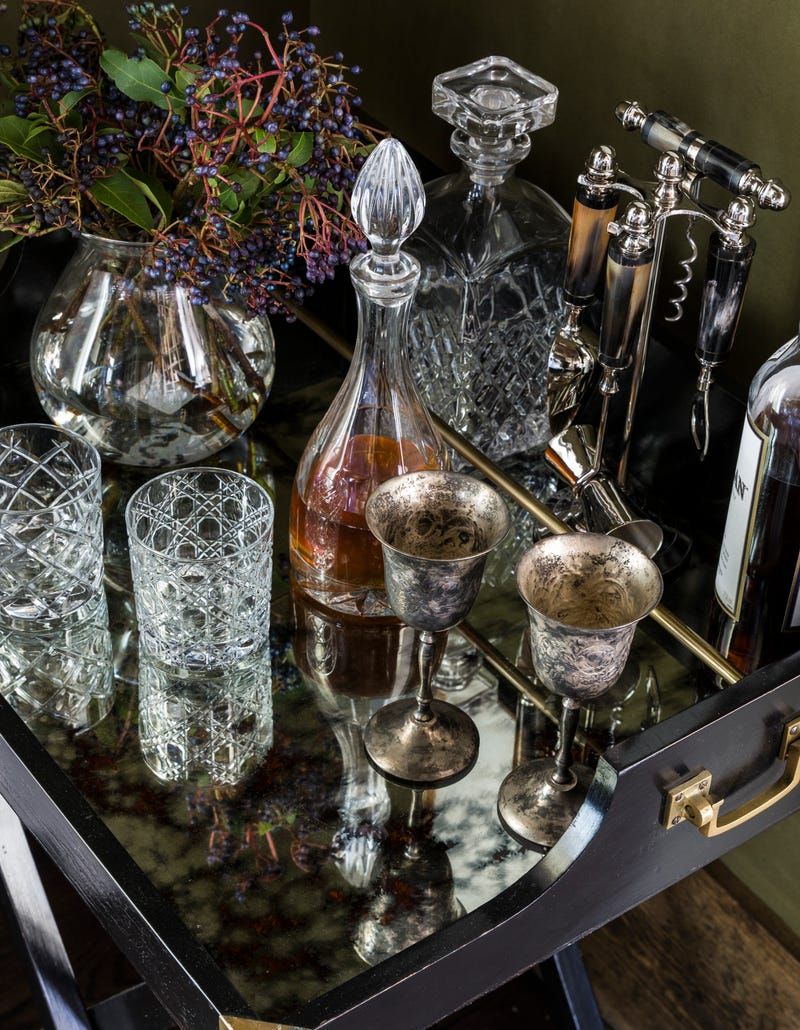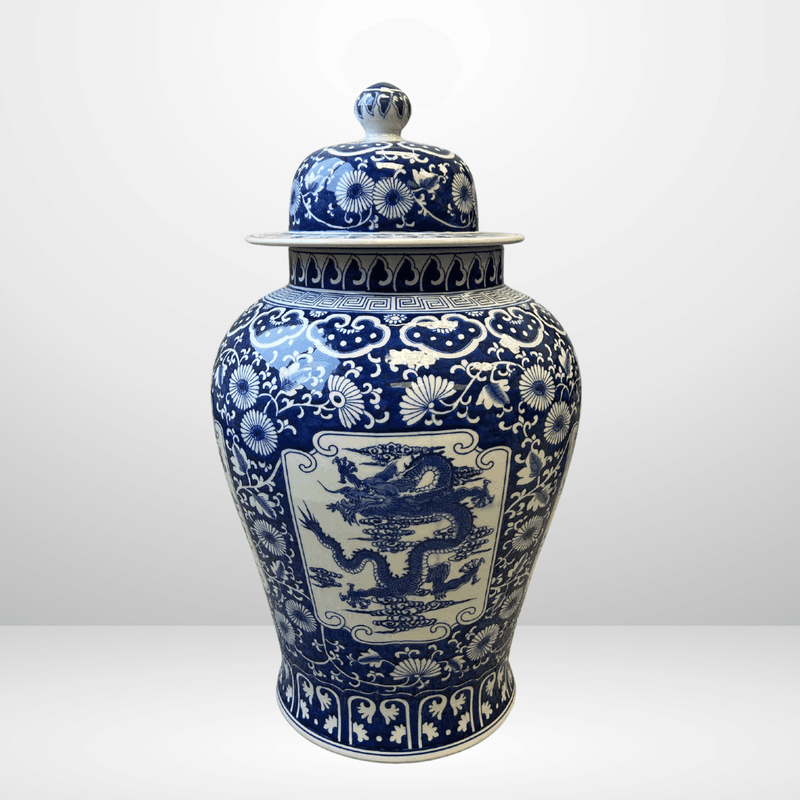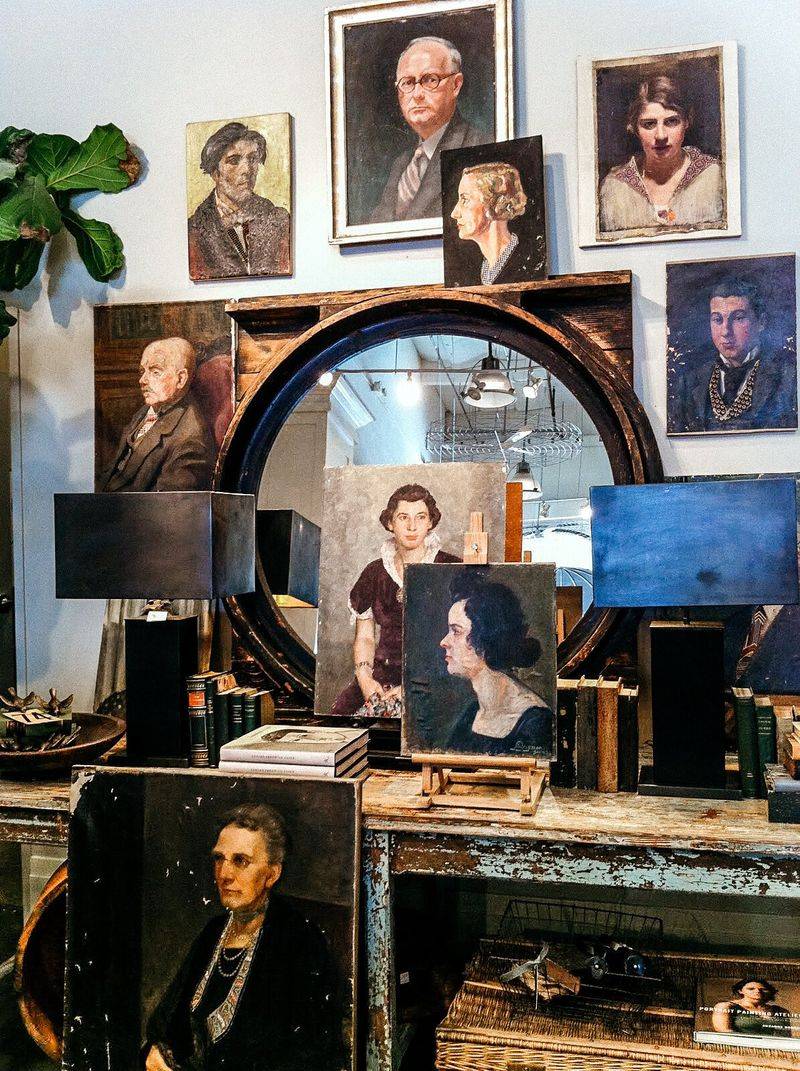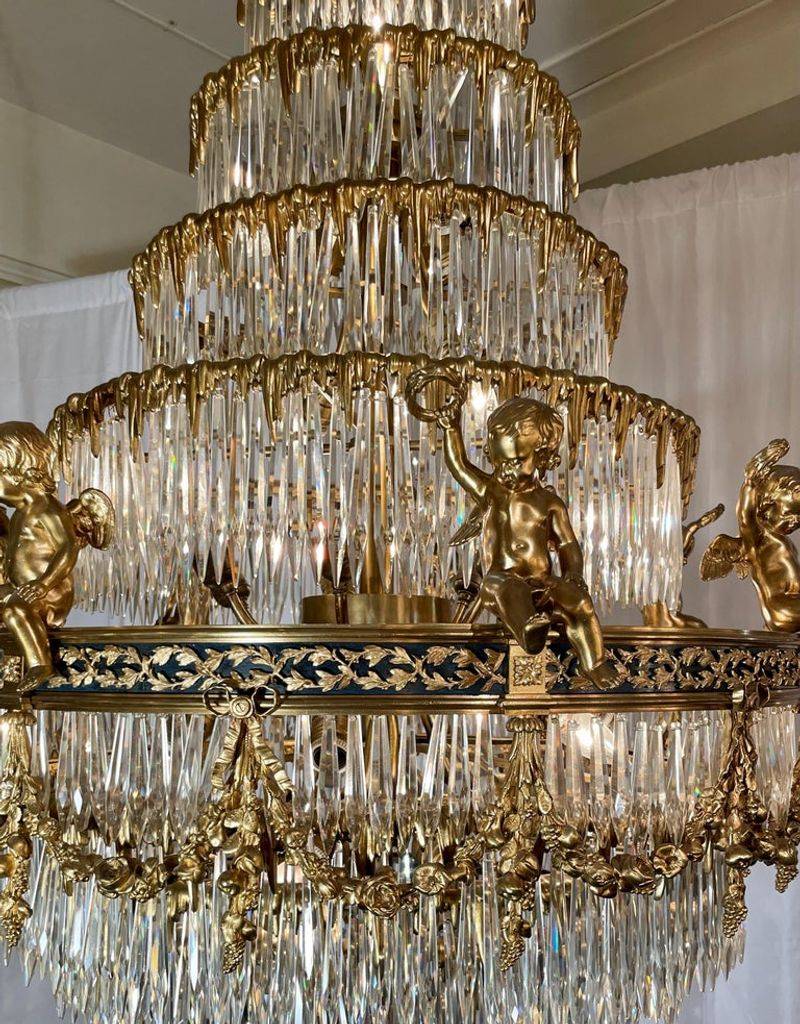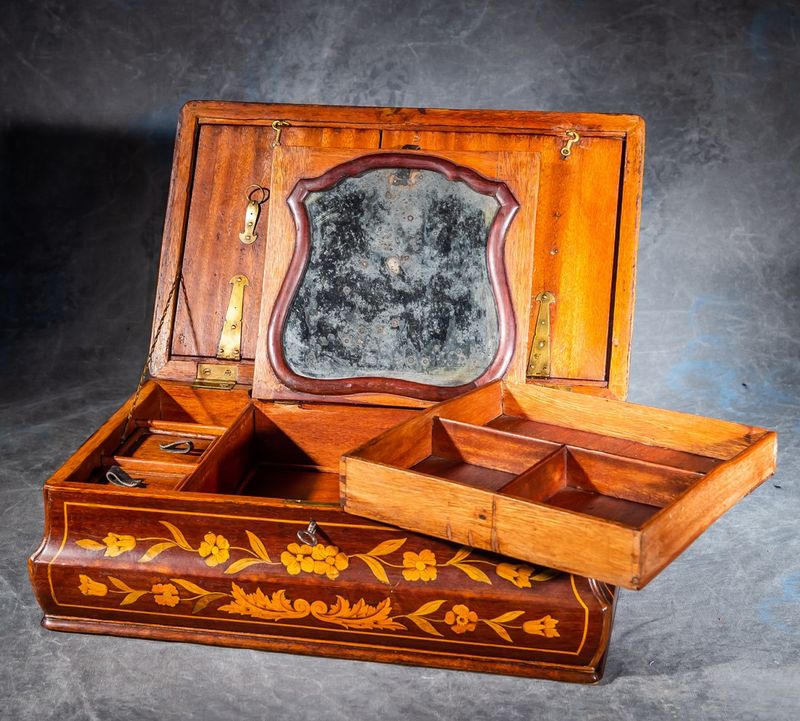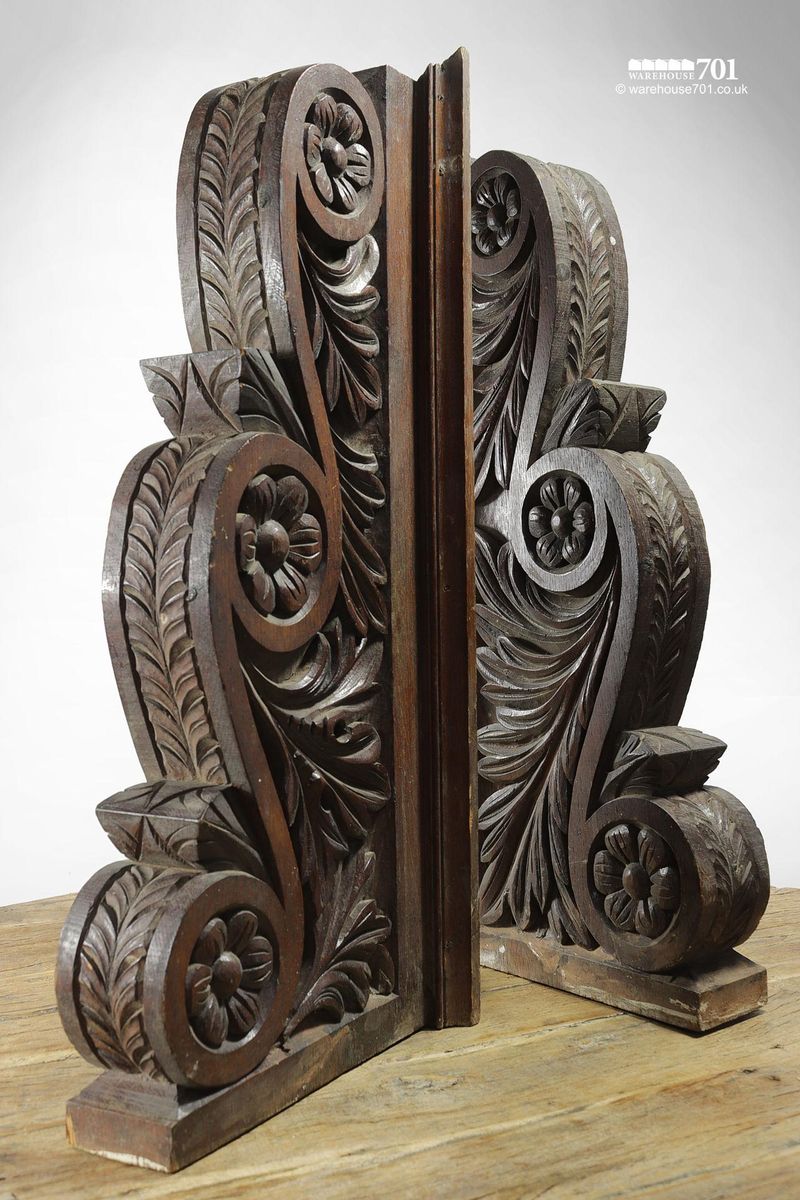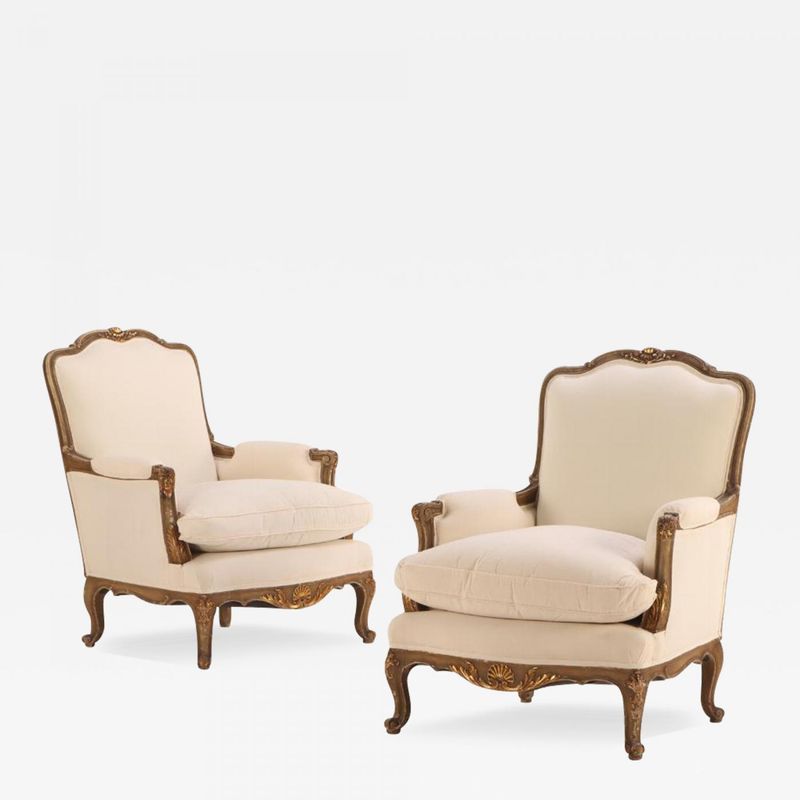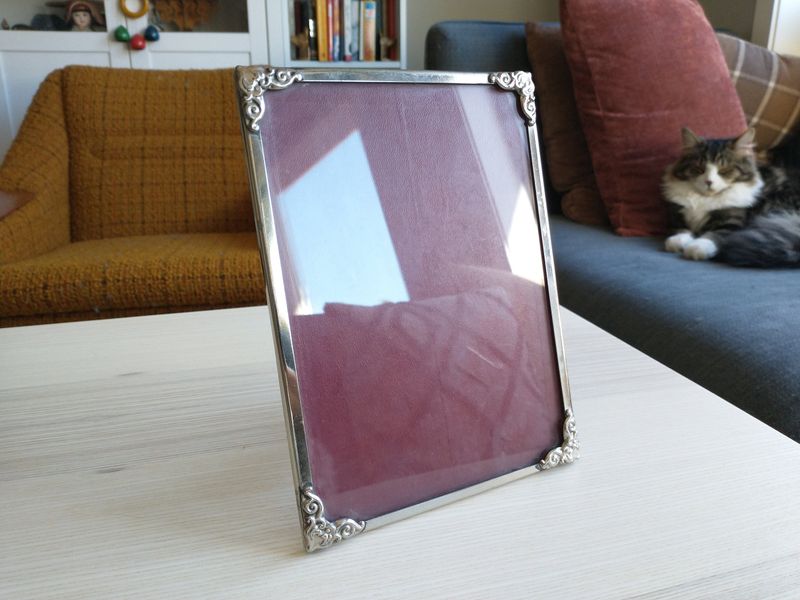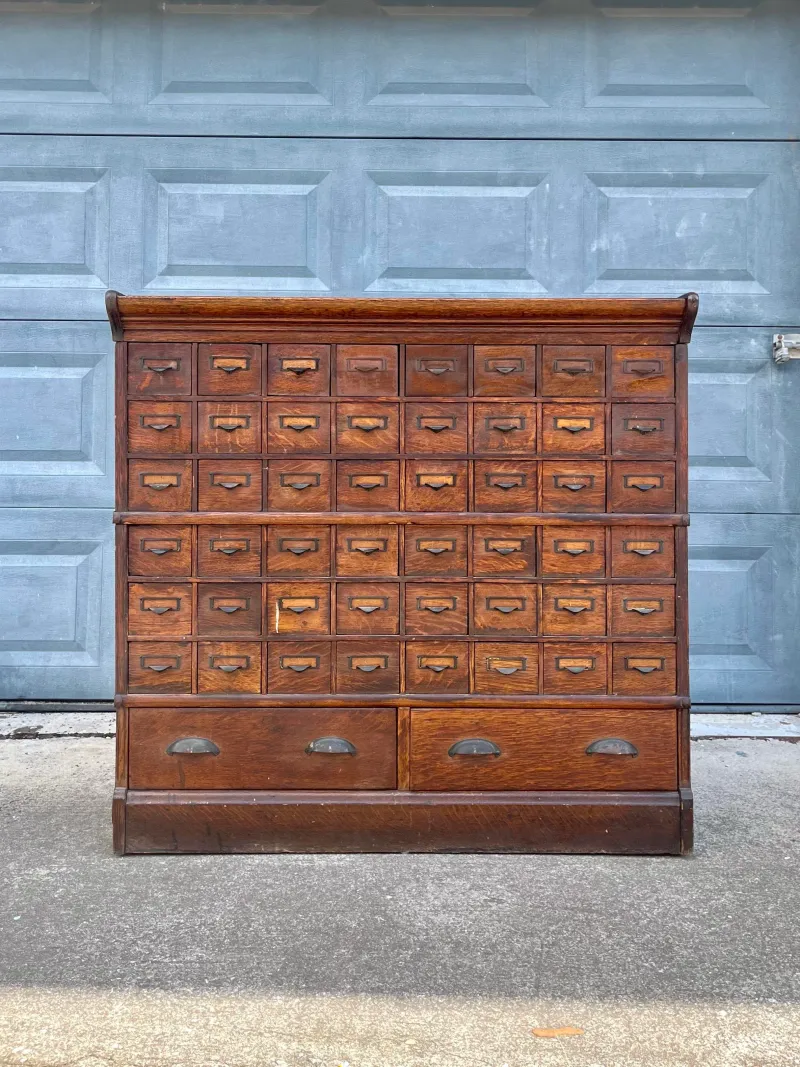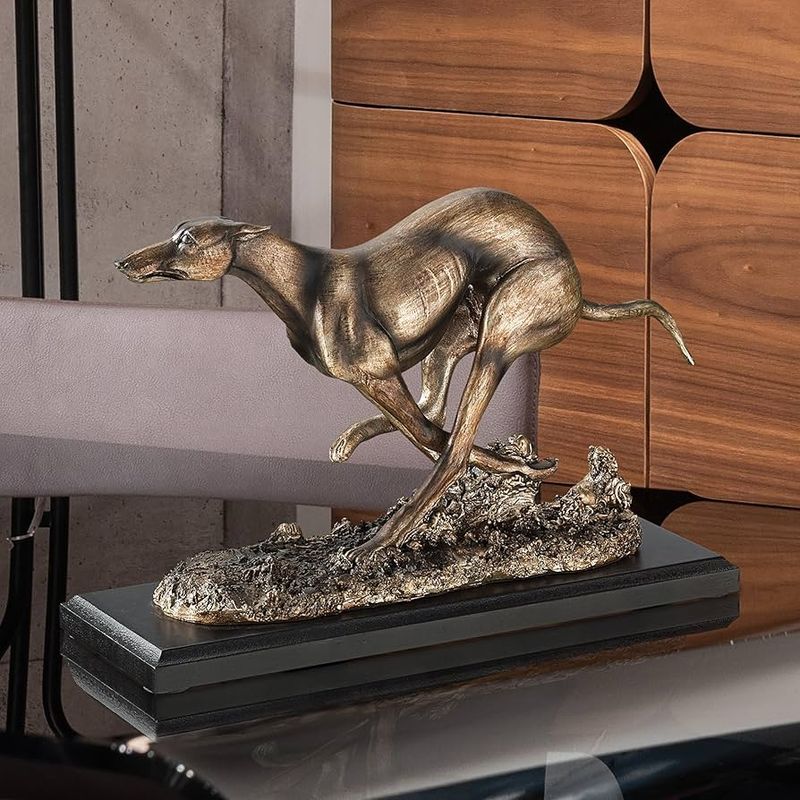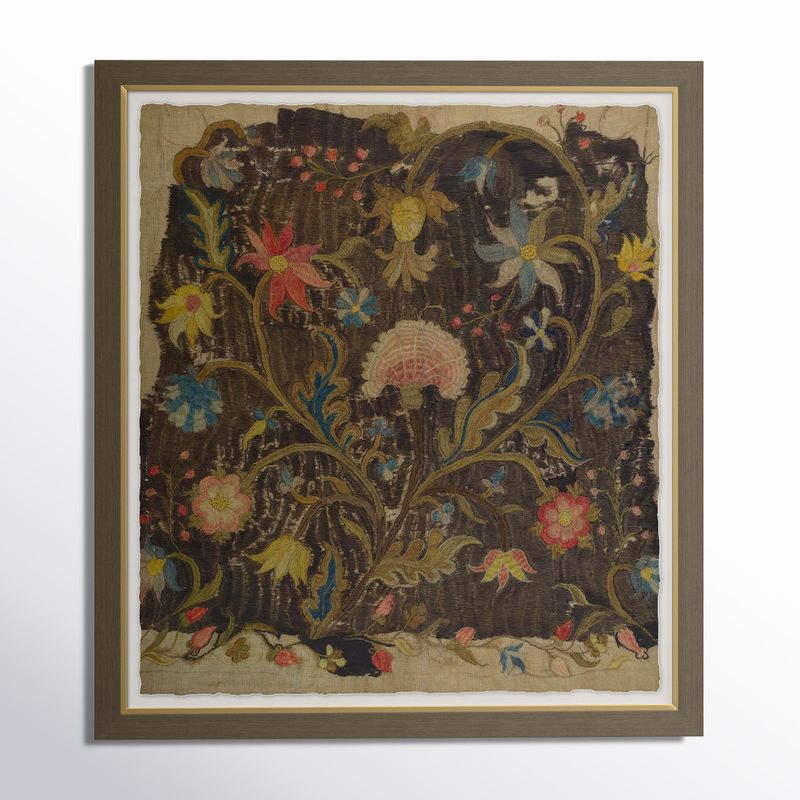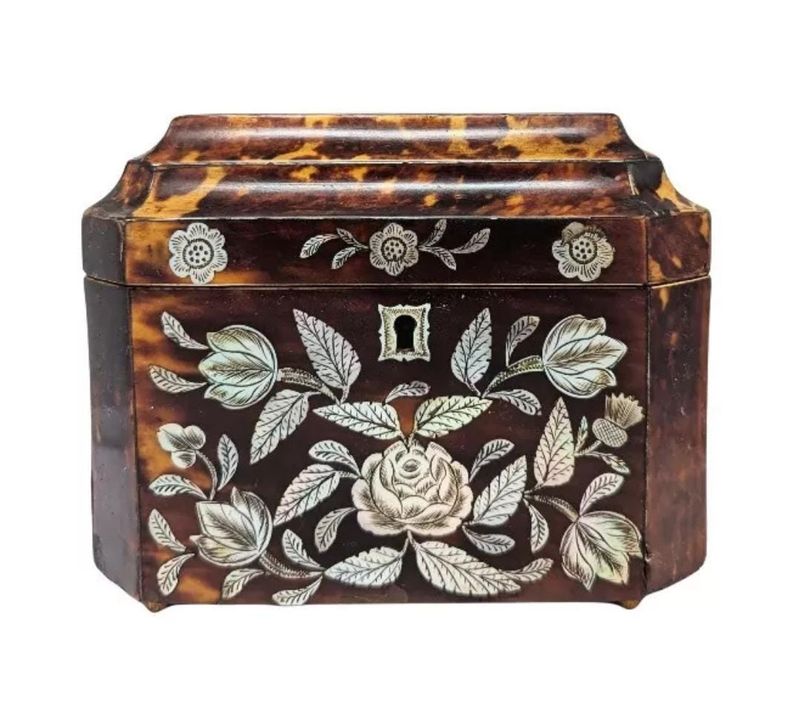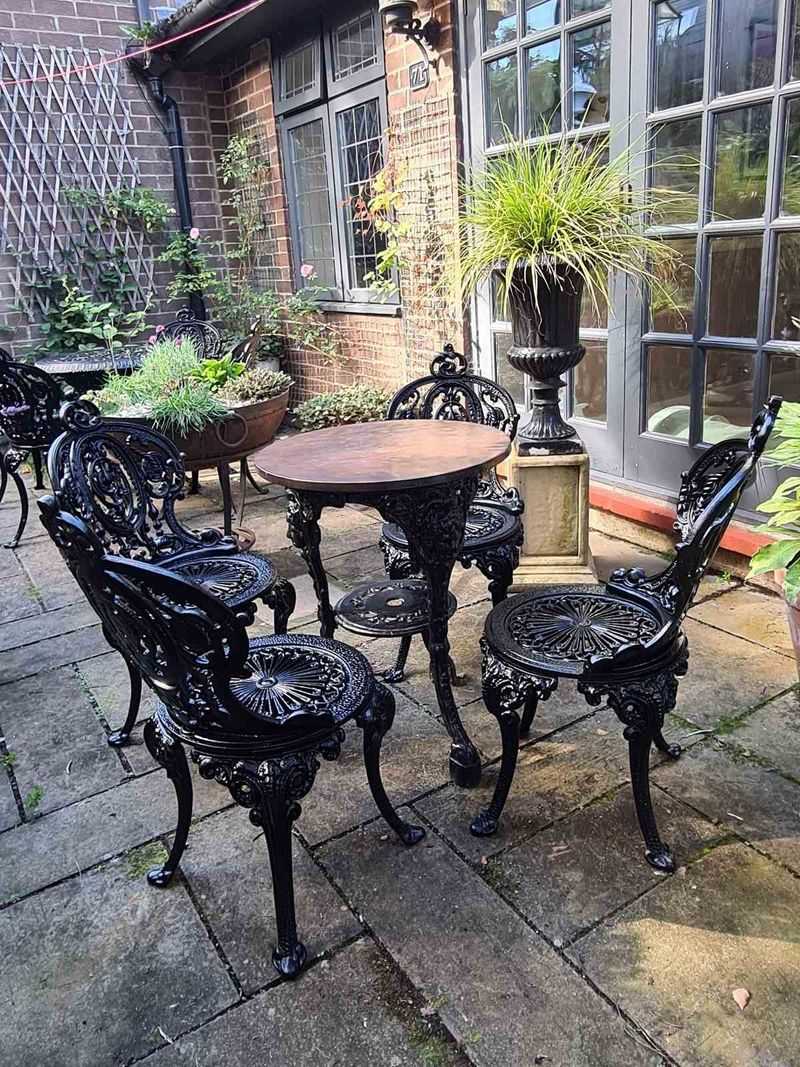Ever wonder what treasures interior designers spot that the rest of us might walk right past?
Professional designers have a special eye for antiques that can transform a space from ordinary to extraordinary.
They know which vintage pieces add character, value, and timeless appeal to any home. Let’s peek into their secret shopping list of antiques they always snatch up when they find them!
1. Ornate Gilded Mirrors
Spotting a well-preserved gilded mirror can make a designer’s heart skip a beat! These reflective beauties bring instant elegance to any room while creating the illusion of more space.
The craftsmanship in vintage mirrors often showcases hand-carved details you simply can’t find in modern reproductions. Many designers place these statement pieces above fireplaces or in entryways for maximum impact.
Even with some wear or minor flaking, these mirrors retain their charm and can become the focal point that ties a room’s design together.
2. Silver Tea Services
Whether sterling or silverplate, vintage tea services carry an air of sophistication that modern entertaining pieces simply can’t match. The patina that develops over decades gives each piece character and depth.
Many designers repurpose these elegant sets beyond their original tea-serving function. They become stunning bathroom accessories, holding cotton balls and soaps, or transform into mini planters for succulents.
Finding a complete set feels like striking gold, but even individual pieces make worthwhile acquisitions that can elevate a coffee table or bookshelf arrangement.
3. Weathered Wooden Trunks
What could tell more stories than a travel trunk that’s crossed oceans and continents? The rich patina and sturdy construction of antique trunks make them irresistible to designers with an eye for history.
Functionally speaking, these pieces offer hidden storage while doubling as coffee tables, bench seating, or bedside tables. Look for original hardware, interior compartments, and travel stickers that hint at the trunk’s adventures.
Smart designers know these versatile pieces work in virtually any décor scheme, from rustic farmhouse to sophisticated urban loft.
4. Hand-Knotted Persian Rugs
Rolling out a genuine Persian rug instantly transforms any space with centuries of artisanal tradition. Savvy designers recognize that even worn or faded specimens can fetch thousands at auction houses.
The natural dyes in these floor coverings mellow beautifully with age, creating color combinations that modern manufacturing simply cannot replicate. Each rug tells a story through its unique pattern, with motifs representing everything from protection symbols to fertility wishes.
Unlike mass-produced alternatives, these investment pieces actually increase in value over time while bringing unmatched warmth and character to a room.
5. Marble-Topped Furniture
Imagine running your fingers across cool, veined marble that’s been polished by generations of careful owners. Designers go wild for marble-topped tables, washstands, and consoles from bygone eras.
The natural variations in the stone ensure each piece remains utterly unique, with patterns that modern reproductions can only attempt to mimic. Even with chips or slight cracks, these marble surfaces maintain their appeal and can be restored by skilled craftspeople.
Many designers mix these classical elements with contemporary furniture for an unexpected juxtaposition that keeps interiors feeling fresh and curated rather than predictable.
6. Brass Library Lamps
Under the warm glow of a brass library lamp, any reading nook transforms into a sophisticated sanctuary. These functional antiques feature adjustable arms and pivoting shades that modern lighting often fails to incorporate with such elegance.
The substantial weight and quality of vintage brass cannot be matched by today’s mass-produced alternatives. Designers particularly value original patina rather than overly polished specimens, as the subtle darkening in crevices highlights the craftsmanship.
When placed on a desk or beside table, these lamps add instant gravitas and create a perfect pool of focused light for reading or working.
7. Crystal Decanters
Nothing elevates a bar cart or sideboard quite like the sparkling presence of cut crystal decanters. The way they refract light creates a magical display that even non-drinkers can appreciate as decorative art.
Designers often group these vessels in collections, mixing heights and cutting patterns for visual interest. Many antique decanters feature sterling silver labels or collars that add another layer of sophistication and craftsmanship.
Beyond their practical purpose of aerating wine or displaying spirits, these glimmering treasures serve as conversation pieces that hint at leisurely evenings and elegant entertaining.
8. Chinoiserie Ceramics
Across design studios worldwide, blue and white Chinoiserie pieces remain perpetually in demand. Their exotic patterns depicting pagodas, willow trees, and mythical landscapes have enchanted collectors for centuries.
Clever designers mix these Asian-inspired treasures with contemporary elements to prevent spaces from feeling stuffy or overly traditional. Even a single ginger jar can become the cornerstone of a room’s color scheme, inspiring everything from wall colors to textile selections.
Beyond their decorative appeal, these ceramics often represent significant craftsmanship and historical exchange between East and West, adding intellectual depth to their beauty.
9. Portrait Oil Paintings
Mysterious faces from the past have an uncanny ability to make a house feel like a home with history. Designers frequently hunt for portrait paintings, whether they’re formal commissioned works or amateur family heirlooms.
The moody, sometimes somber expressions typical of earlier centuries create fascinating visual tension when placed in otherwise cheerful modern rooms. Many designers prefer portraits with damaged frames or minor condition issues, as these imperfections often make the pieces more affordable and add authenticity.
Gallery walls mixing portraits from different periods create a collected-over-time aesthetic that can’t be achieved with contemporary art alone.
10. Campaign Furniture
With brass corners gleaming against rich wood, campaign furniture captures the adventurous spirit of a bygone era. Originally designed for military officers to transport during expeditions, these pieces feature ingenious folding mechanisms and removable parts.
The clean lines and functional hardware make campaign chests, desks, and beds surprisingly compatible with contemporary interiors. Designers prize the brass fittings that have developed a natural patina over decades of use.
Unlike many antiques that require gentle handling, these pieces were built for durability and continue to serve as practical furniture while telling tales of exploration and empire.
11. Grand Chandeliers
Hanging like frozen fireworks from above, vintage crystal chandeliers create magic in even the most ordinary spaces. Designers race to claim these lighting masterpieces when they appear at estate sales or auctions.
The way antique cut crystals scatter light across a room simply cannot be replicated by modern fixtures. Many designers install these grand pieces in unexpected locations—over bathtubs or in walk-in closets—rather than limiting them to formal dining rooms.
Even chandeliers missing a few crystals or requiring rewiring are worth the investment and restoration, as their presence transforms the entire feeling of a home.
12. Inlaid Wood Boxes
Small enough to fit in your hands yet detailed enough to study for hours, antique inlaid boxes represent miniature masterpieces of woodworking. From Italian marquetry to English Tunbridge ware, these little containers showcase remarkable precision.
Designers collect these boxes not just for their beauty but for their practicality in corralling small items on desks, vanities, and coffee tables. The intricate patterns—often depicting flowers, geometric designs, or architectural scenes—add visual interest to any surface.
Many still retain their original velvet linings or compartments, making them perfect for storing jewelry or other precious items while on display.
13. Carved Wooden Corbels
Once supporting mantels and shelves in grand homes, architectural salvage pieces like carved corbels find new life in designer hands. These sculptural elements bring instant architectural interest to contemporary spaces lacking built-in character.
Creative designers repurpose these ornate brackets as bookends, mount them as wall art, or use them as bases for glass tabletops. The craftsmanship evident in hand-carved acanthus leaves, scrollwork, and figurative details speaks to a level of artistry rarely found in modern construction.
Even a single impressive corbel can become a room’s conversation piece when thoughtfully displayed on a stand like museum-worthy sculpture.
14. French Bergère Chairs
Curvy and comfortable, the bergère chair represents the perfect marriage of elegance and relaxation. Unlike many antique seating options that sacrifice comfort for style, these upholstered armchairs with visible wooden frames were designed for lengthy conversations.
Savvy designers snap up these chairs regardless of their upholstery condition, knowing that recovering them offers the chance to create a unique statement piece. The graceful exposed wood frames often feature intricate carvings that showcase the craftsman’s skill.
What makes these chairs particularly versatile is their ability to work equally well in formal living rooms or casual bedroom corners.
15. Sterling Silver Frames
Worthy of the memories they protect, antique sterling silver frames elevate family photographs from mere snapshots to heirlooms. The substantial weight in your hands immediately communicates quality that modern alternatives rarely achieve.
Designers frequently group these frames in collections, mixing sizes and styles for a curated look on mantels or console tables. The soft luster of properly polished sterling creates a gentle glow that draws the eye without overwhelming the image within.
Even frames with minor dents or monograms from previous owners add character and authenticity that brand-new versions simply cannot provide.
16. Apothecary Cabinets
Riddled with tiny drawers that once held healing herbs and medicinal compounds, antique apothecary cabinets fascinate designers and clients alike. The meticulous organization inherent in these pieces makes them perfect for storing everything from art supplies to jewelry collections.
Original brass label holders and hand-painted drawer fronts speak to a time when even utilitarian furniture was crafted with aesthetic consideration. Many designers leave these pieces untouched, preserving the worn patina and occasional Latin labels that hint at their pharmaceutical past.
Whether displayed in bathrooms, craft rooms, or offices, these cabinets bring both character and remarkable storage capabilities to modern homes.
17. Bronze Sculptures
Adding gravitas to bookshelves and mantels everywhere, bronze sculptures carry the weight of both material and artistic expression. Designers recognize that even modest examples from unknown artists possess a substantial presence that resin reproductions cannot match.
The natural patina that develops over decades gives each piece a unique finish, ranging from rich chocolate browns to verdigris greens. Animal forms remain particularly collectible, with horses, dogs, and wildlife subjects commanding attention in any room.
Unlike fragile decorative objects, these substantial metal artworks can stand up to household activity while bringing sophisticated three-dimensional interest to interior spaces.
18. Tapestry Fragments
Centuries-old textile art finds new purpose under the appreciative eye of interior designers. Even fragmentary pieces of hand-woven tapestries bring color, texture, and historical gravitas to contemporary walls when properly framed.
The faded vegetable dyes create color palettes impossible to achieve with modern materials – subtle greens, burnt oranges, and muted blues that blend harmoniously with any décor scheme. Designers particularly value fragments depicting flora, fauna, or architectural elements that can stand alone aesthetically.
When mounted on linen and placed behind conservation glass, these textile treasures become statement art pieces that anchor rooms with their quiet presence.
19. Tortoiseshell Accessories
Before environmental protections (thankfully) ended the trade, tortoiseshell items represented the height of luxury in personal accessories. Today, designers treasure antique examples for their extraordinary depth and warmth of pattern.
The mottled amber and brown markings create distinctive pieces that draw the eye without overwhelming a space. From small boxes and frames to larger trays and mirrors, these items bring organic pattern and rich color to tabletops and walls.
Genuine antique pieces have developed a deep patina over decades that simply cannot be replicated by modern plastic imitations claiming the tortoiseshell name.
20. Iron Garden Furniture
Weathered by decades of sunshine and rain, vintage iron garden pieces bring instant romance to both outdoor and indoor spaces. The intricate patterns cast delightful shadows that dance across floors and walls as light shifts throughout the day.
Designers particularly value chairs and tables from the Victorian and Art Nouveau periods, with their organic flowing lines inspired by nature. Even with chipped paint or slight rust, these sturdy survivors maintain both their structural integrity and visual appeal.
Many designers bring smaller pieces indoors as plant stands or accent tables, creating unexpected juxtapositions that keep interiors from feeling predictable or formulaic.

